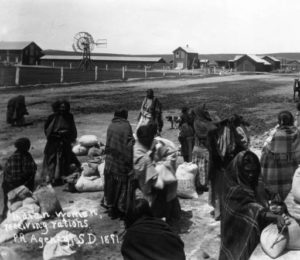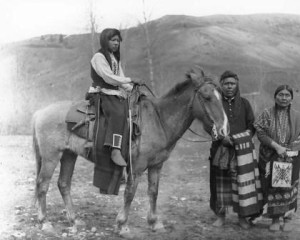By the early 1920s, some of the indifference to Native Americans’ cultural values had lessened.
However, even if a government official occasionally saw positive traits in native peoples or respected their need for cultural wholeness, his viewpoint could be buried in a continued avalanche of popular sentimentality and/or naivete that perpetuated stereotypes and fed unrealistic daydreams about the status of Native Americans.
In 1923, a reporter for the Canton Farmers Leader wrote an article about the Canton Asylum for Insane Indians. In it, he lauded the decision to create the asylum and described a few of its patients. However, before getting to the meat of the article, the writer had this to say about current Indian affairs:
 “Indians today are becoming more and more civilized. They are being educated in all sections of the country. They are given opportunities to live in much the same contentment as the white man. They have been provided with handsome reservations in appropriate portions of the nation.”
“Indians today are becoming more and more civilized. They are being educated in all sections of the country. They are given opportunities to live in much the same contentment as the white man. They have been provided with handsome reservations in appropriate portions of the nation.”
Anyone who could write this while living in proximity to a reservation was either self-deluded or determined to support a comfortable fairy-tale that allowed readers to feel good about themselves and their government.







